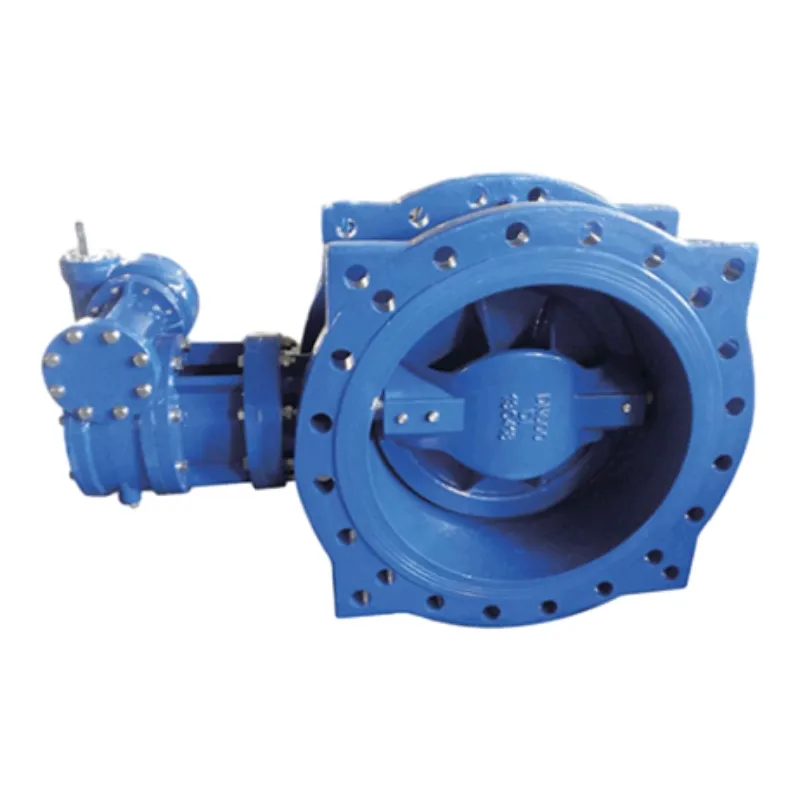10 月 . 18, 2024 10:41 Back to list
Wafer Style Dual Plate Check Valve Overview and Applications
Dual Plate Check Valve Wafer Type
A dual plate check valve, particularly the wafer type, is a vital component in fluid handling systems commonly used in various industrial applications, including water treatment, power generation, and chemical processing. Its primary function is to prevent backflow, ensuring that the fluid flows in one direction, thereby safeguarding equipment and maintaining system efficiency.
What is a Dual Plate Check Valve?
A dual plate check valve consists of two hinged plates that open and close in response to the flow of fluid. When the fluid moves in the intended direction, the plates swing open, allowing unrestricted passage. Conversely, if the flow direction reverses, the plates close tightly, preventing backflow. This design lends itself well to applications where space constraints exist, as the wafer type check valve is designed to be sandwiched between flanges in the pipeline.
Advantages of Wafer Type Design
1. Compact Size The wafer type dual plate check valve is significantly lighter and more compact than traditional globe or swing check valves. Its slim profile enables it to fit into tighter spaces, making it ideal for applications where vertical or horizontal space is at a premium.
2. Reduced Flow Resistance The dual plate design minimizes turbulence and pressure drops along the pipeline, improving flow characteristics. This design feature enhances the overall efficiency of the system, reducing energy costs associated with pumping fluids through the valves.
dual plate check valve wafer type

3. Low Maintenance The simple mechanical structure of wafer type check valves makes them easy to maintain. With fewer moving parts than other styles, there’s a reduced risk of wear and tear. Regular inspections and basic upkeep can often keep these valves operating effectively for years.
4. Versatility Wafer type dual plate check valves can be used in various applications, including water supply systems, wastewater treatment, fire protection systems, and in industrial settings like oil and gas transportation. They’re compatible with a range of fluids, including clean water, sludge, and corrosive chemicals, when made from suitable materials like stainless steel, ductile iron, or polymer composites.
Applications
In wastewater treatment facilities, dual plate check valves are instrumental in controlling flow during both the intake and discharge processes. They help to prevent reverse flow that can lead to contamination and inefficiency in treatment processes. Similarly, in power plants, these valves minimize potential backflow in cooling systems, protecting pumps and minimizing the risk of operational disruptions.
In the oil and gas industry, where maintaining the integrity and flow of hydrocarbons is critical, dual plate check valves prevent backflow that could cause leaks or hazardous conditions. These applications require valves that are not only effective but also reliable under high pressure and fluctuating temperatures, making the dual plate wafer design an ideal choice.
Conclusion
The dual plate check valve, particularly in its wafer form, stands out as an essential component in the modern engineering landscape. Its compact yet efficient design provides a reliable solution for preventing backflow in a wide range of fluid handling applications. As industries continue to prioritize efficiency, reliability, and safety in their operations, the demand for dual plate check valves is likely to grow, affirming their importance in engineering practices. The advantages of this valve type ensure that it will remain a key element in the development of more efficient and effective fluid transfer systems across various sectors.
Share
-
Understanding the Differences Between Wafer Type Butterfly Valve and Lugged Butterfly ValveNewsOct.25,2024
-
The Efficiency of Wafer Type Butterfly Valve and Lugged Butterfly ValveNewsOct.25,2024
-
The Ultimate Guide to Industrial Swing Check Valve: Performance, Installation, and MaintenanceNewsOct.25,2024
-
Superior Performance with Industrial Swing Check Valve: The Essential Valve for Any SystemNewsOct.25,2024
-
Industrial Swing Check Valve: The Ideal Solution for Flow ControlNewsOct.25,2024
-
You Need to Know About Industrial Swing Check Valve: Functionality, Scope, and PerformanceNewsOct.25,2024